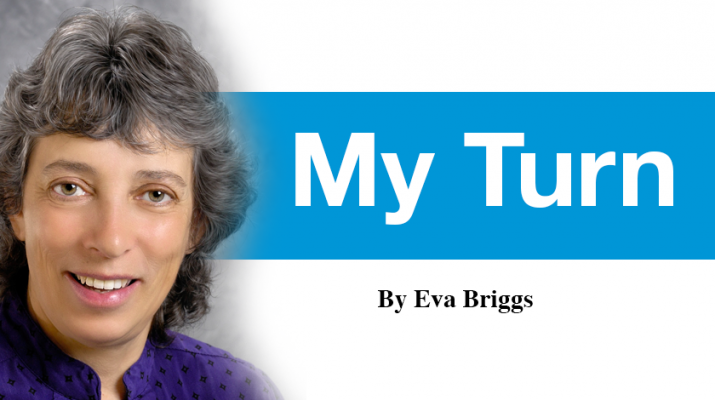By Eva Briggs
Anxiety is the most common mental illness in the United States. It arises from a complex set of risk factors, including genetics and life events.
It turns out that anxiety encompasses an entire cluster of disorders. Physicians use a classification system called DSM-5 (Diagnostic and Statistical Manual, 5th edition) to attempt to organize their understanding of anxiety disorders.
In this column I’m going to write about various types of anxiety disorders and their features. Next month I will write about some treatments for anxiety disorders.
Not included in the DSM-5 are anxiety disorders caused by medical conditions producing similar symptoms. This includes heart arrhythmias, mitral valve prolapse, chronic obstructive pulmonary disease, overactive thyroid (hyperthyroidism), hyperparathyroidism, temporal lobe epilepsy, and transient ischemic attacks (“mini strokes”).
Certain medicines also may cause symptoms of anxiety. Examples are corticosteroids, methylphenidate, selective serotonin reuptake inhibitors, theophylline, methamphetamine, substance use, alcohol withdrawal, and some complementary and alternative medicines. It’s important to exclude these secondary causes of anxiety.
• Separation anxiety involves developmentally inappropriate excessive fear or anxiety about separation from home or attachment figures. It’s normal for small children to become upset if a parent leaves or they are otherwise separated from a parent figure. But that’s not normal behavior for older children and adults. Symptoms include persistent reluctance or refusal to go out, fear of being alone without the attachment figure, reluctance or refusal to sleep away from home, repeated nightmares about separation. The symptoms impair social, academic and occupational function.
• Selective mutism affects less than 1% of the population. Children fail to initiate speech or respond when spoken to by others. The symptoms occur in social situations where there is an expectation for speaking, such as school. The symptoms last for more than one month.
• Specific phobias are fear or anxiety produced by the presence of a particular situation or object. The fear is sufficiently intense to cause active avoidance or intense fear and anxiety when encountered. The fear or anxiety is out of proportion to the actual danger proposed by the object. The symptom is present for more than six months and causes clinically significant distress or impairment. Some of the most common specific phobias are claustrophobia (fear of being in constricted spaces), aerophobia (fear of flying), arachnophobia (fear of spiders), driving phobia (fear of driving a car), acrophobia (fear of heights), escalaphobia (fear of escalators), and tunnel phobia (fear of tunnels). There is even nomophobia, the fear of being without a cell phone or computer, a pathologic fear of being out of touch with technology.
• Generalized anxiety disorder involves excessive anxiety and worry about a number of events or activities. Diagnostic criteria include anxiety and worry that occur for more days than not over the course of six months and difficulty controlling the worry. At least three of the following must be present: restlessness, fatigue, difficulty concentrating, mind going blank, irritability, muscle tension, disturbed sleep, anxiety, worry, or physical symptoms. The symptoms impair social, occupational, or other life situations.
• Social anxiety is an intense fear of social situations where the individual may be scrutinized by others. This causes the patient to avoid social situations with fear and anxiety out of proportion to the actual threat. A subtype of this form of anxiety involves fear of performance such as speaking or performing in public.
• Panic disorder entails recurrent unexpected panic attacks. Panic attacks are abrupt surge of intense fear or discomfort that peaks within minutes. To be classified as a panic attack, at least four of the following symptoms must occur: palpitations, pounding heart, accelerated heart rate, sweating, trembling or shaking, shortness of breath, sensation of being smothered, feelings of choking, chest pain, nausea or abdominal distress, feeling dizzy, faint, or unsteady, chills or heat sensations, paresthesias (numbness or tingling), experiencing derealization or depersonalization, fear of losing control or going crazy, or fear of dying. To satisfy the criteria of panic disorder, the panic attacks must occur over a period lasting more than one month.
• Agoraphobia is an intense fear or anxiety triggered by exposure to a wide variety of situations such as using public transportation, being in an open or enclosed space, standing in line or being in a crowd, being outside the home alone. The individual fears that escape could be difficult, and help might not be available if he or she develops symptoms.
• Adjustment disorder with anxiety is a reaction to stressful life events.
Symptoms that don’t meet the full criteria for a specified anxiety disordered may be called other specified anxiety disorder or unspecified anxiety disorder.
For my next column, I will write about some ways to treat anxiety.
Eva Briggs is a medical doctor who works at two urgent care centers in the Syracuse region.

